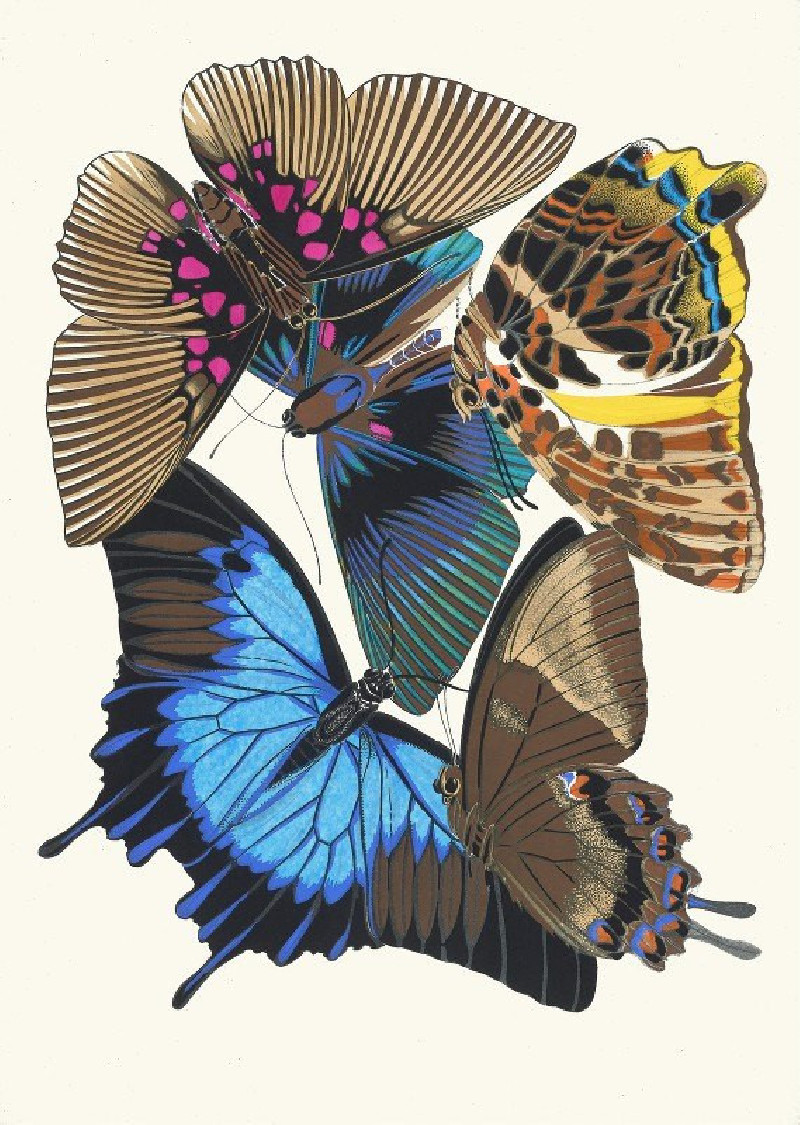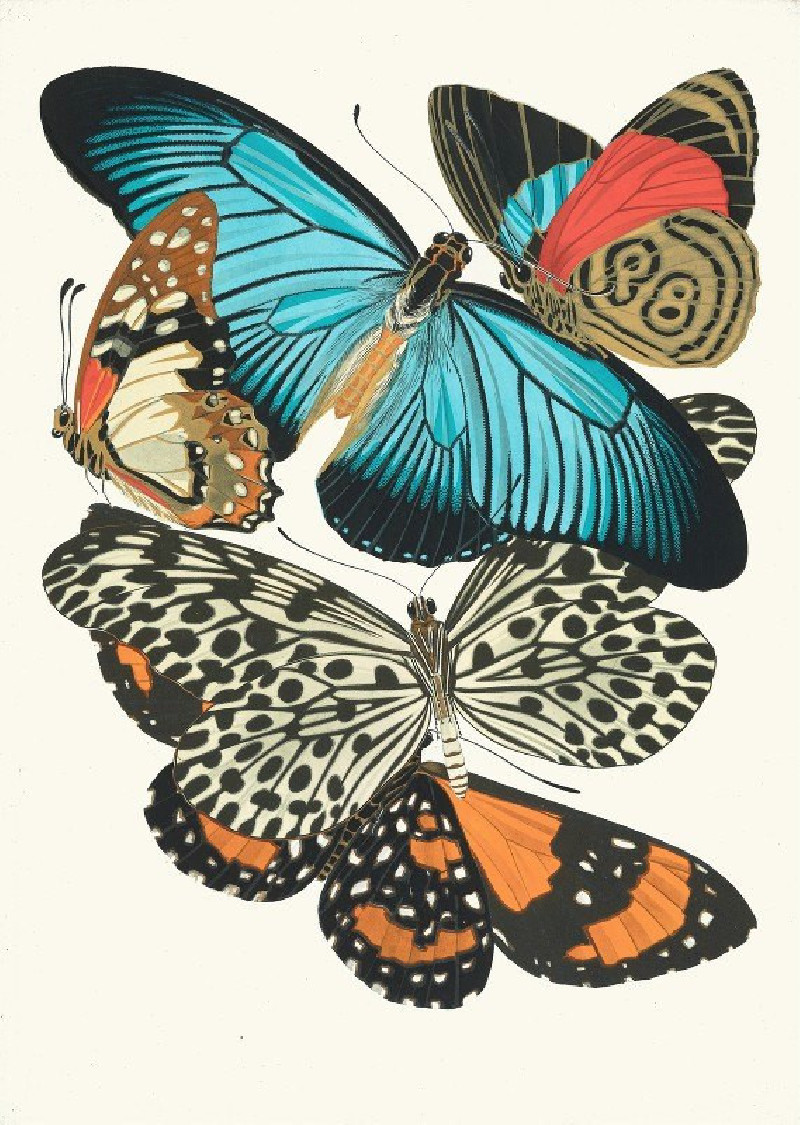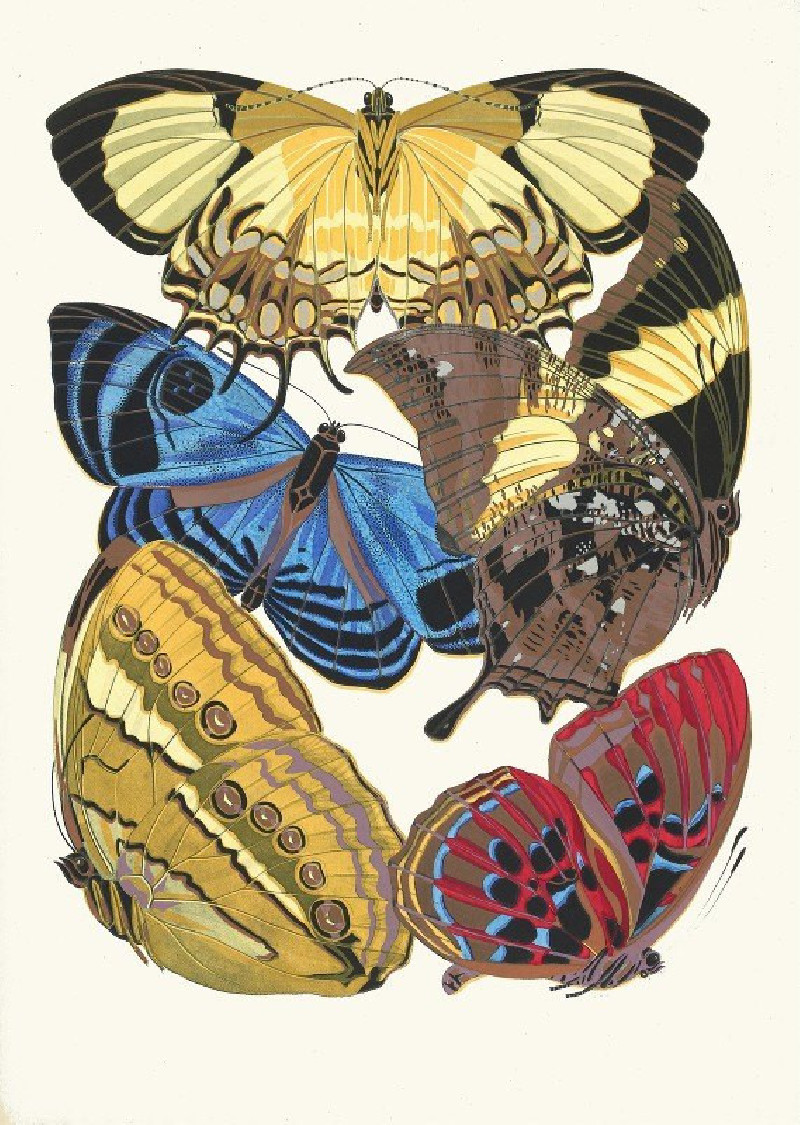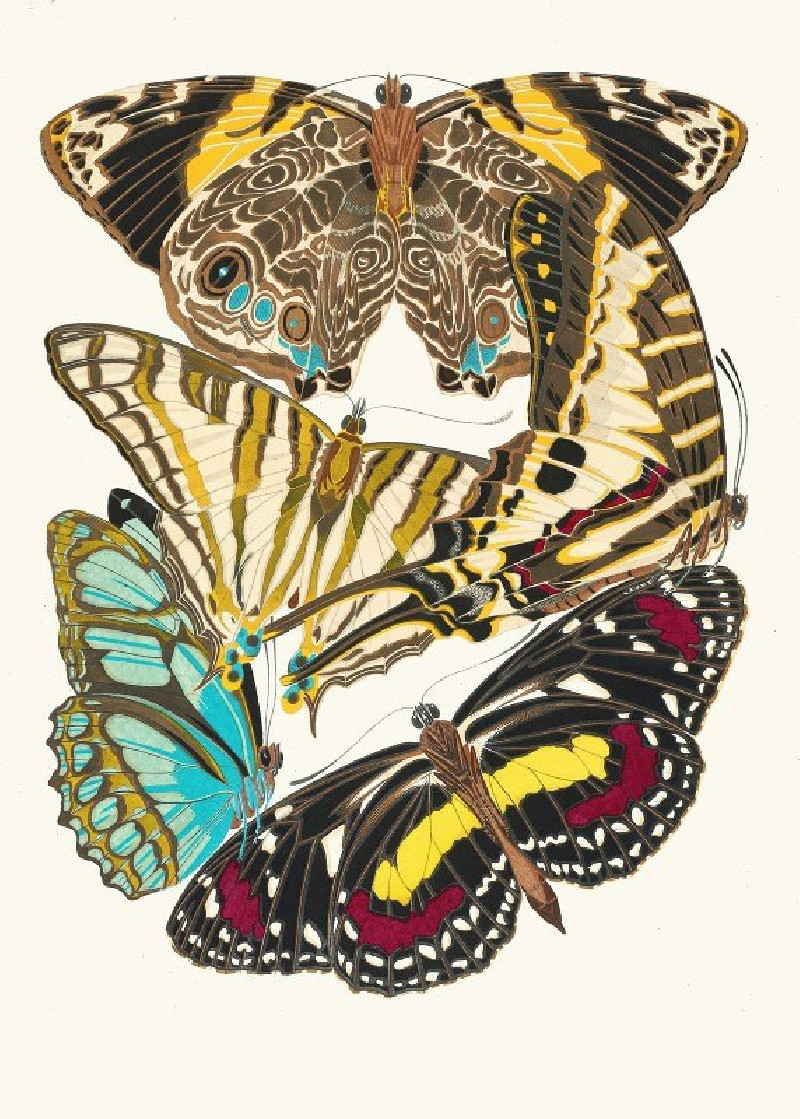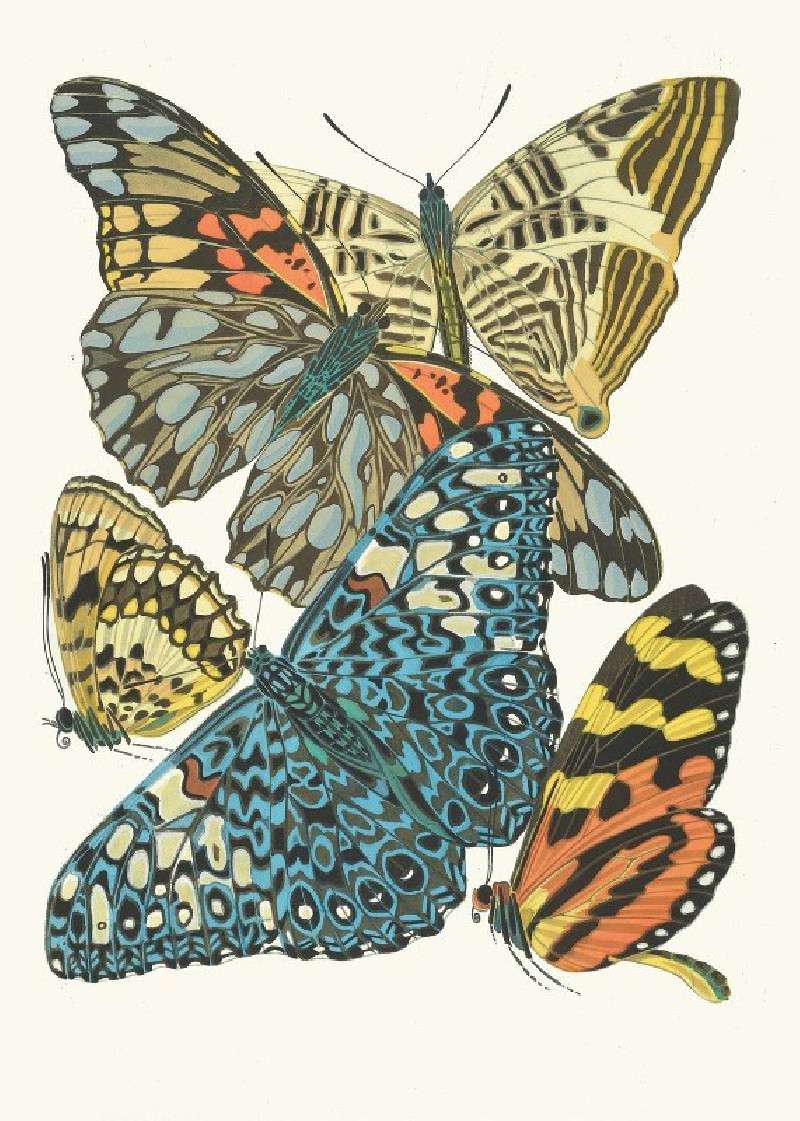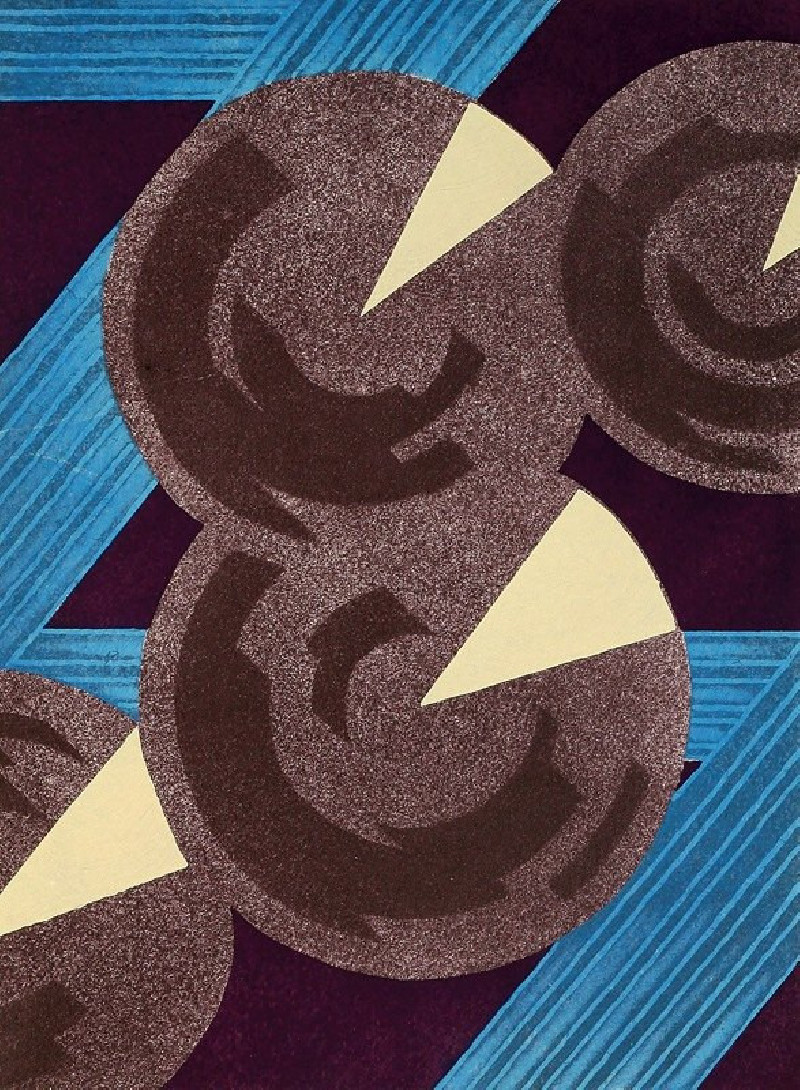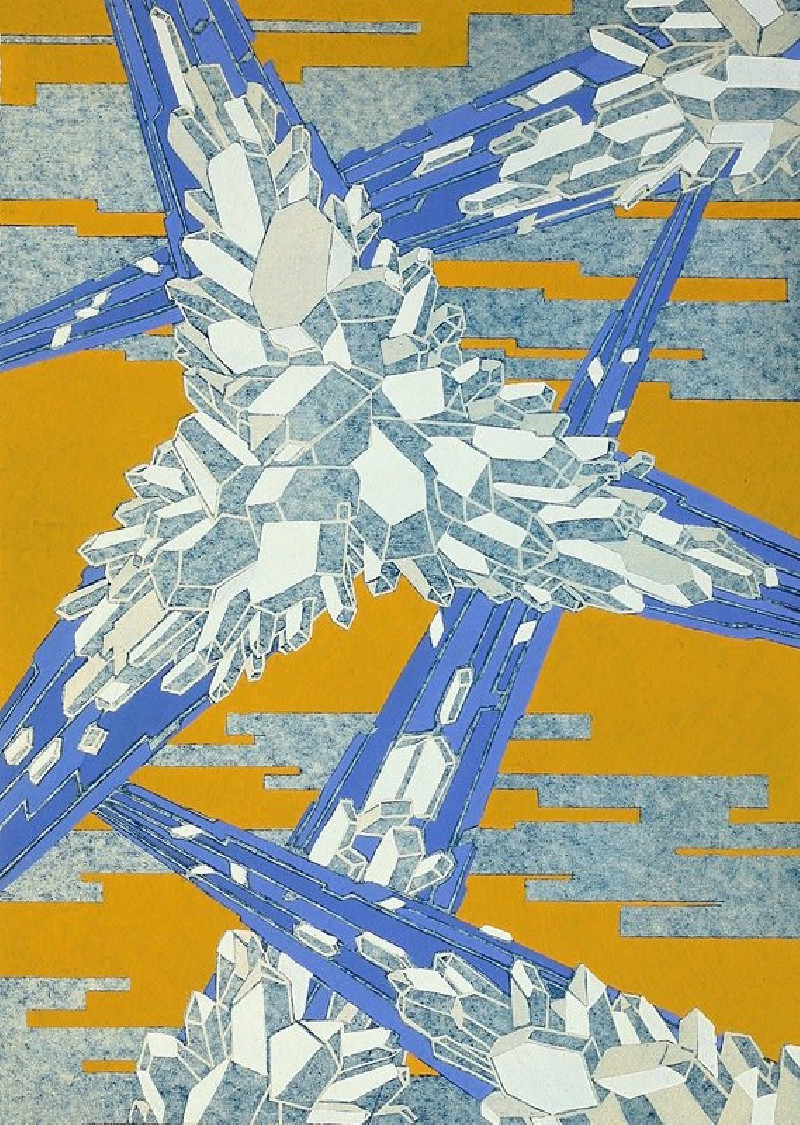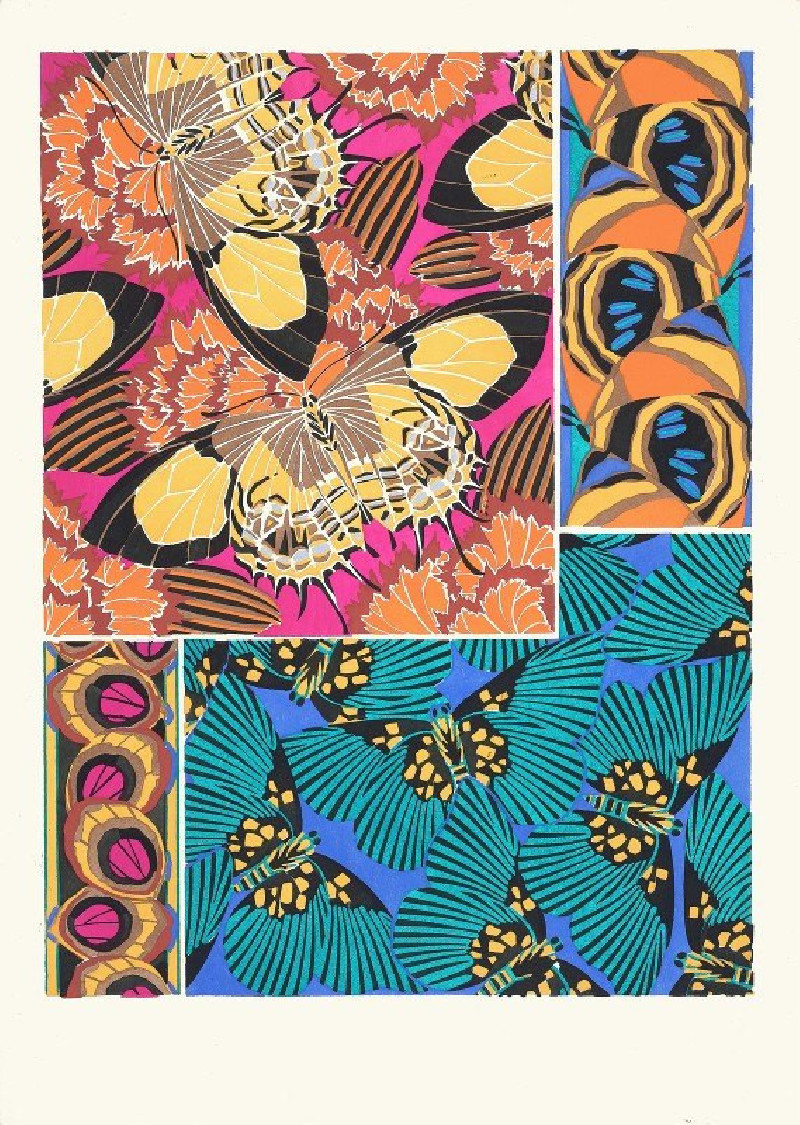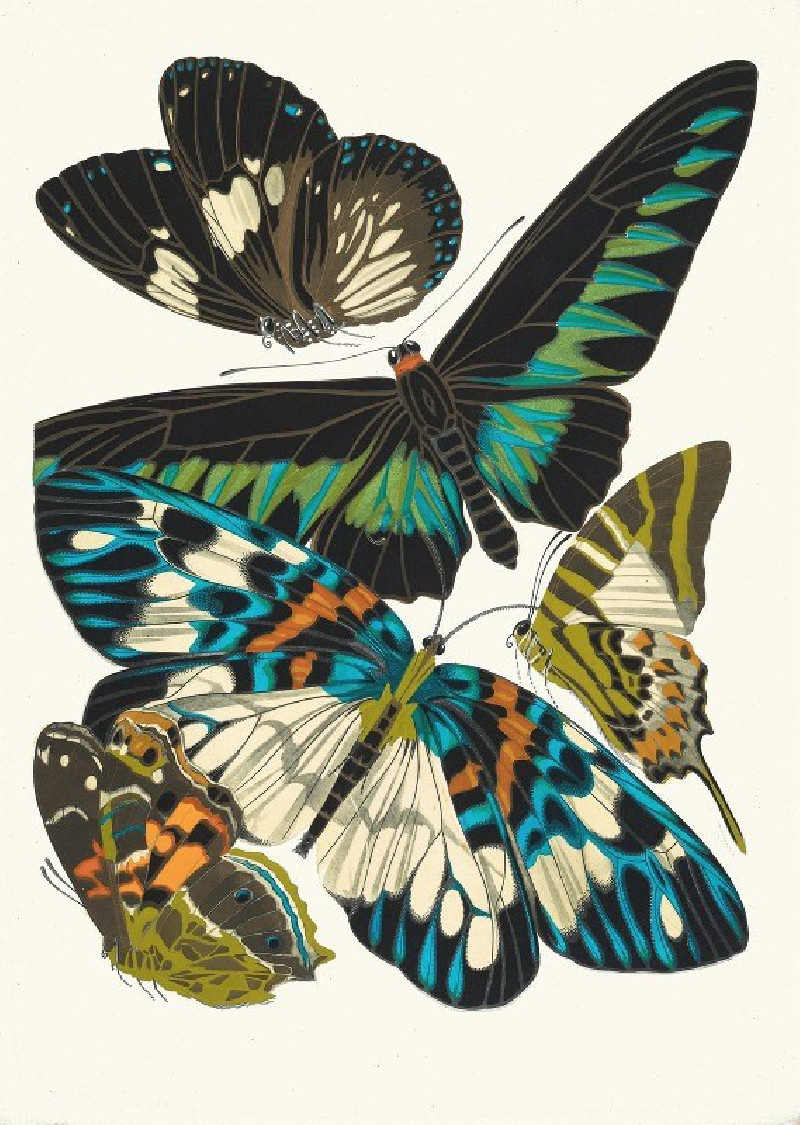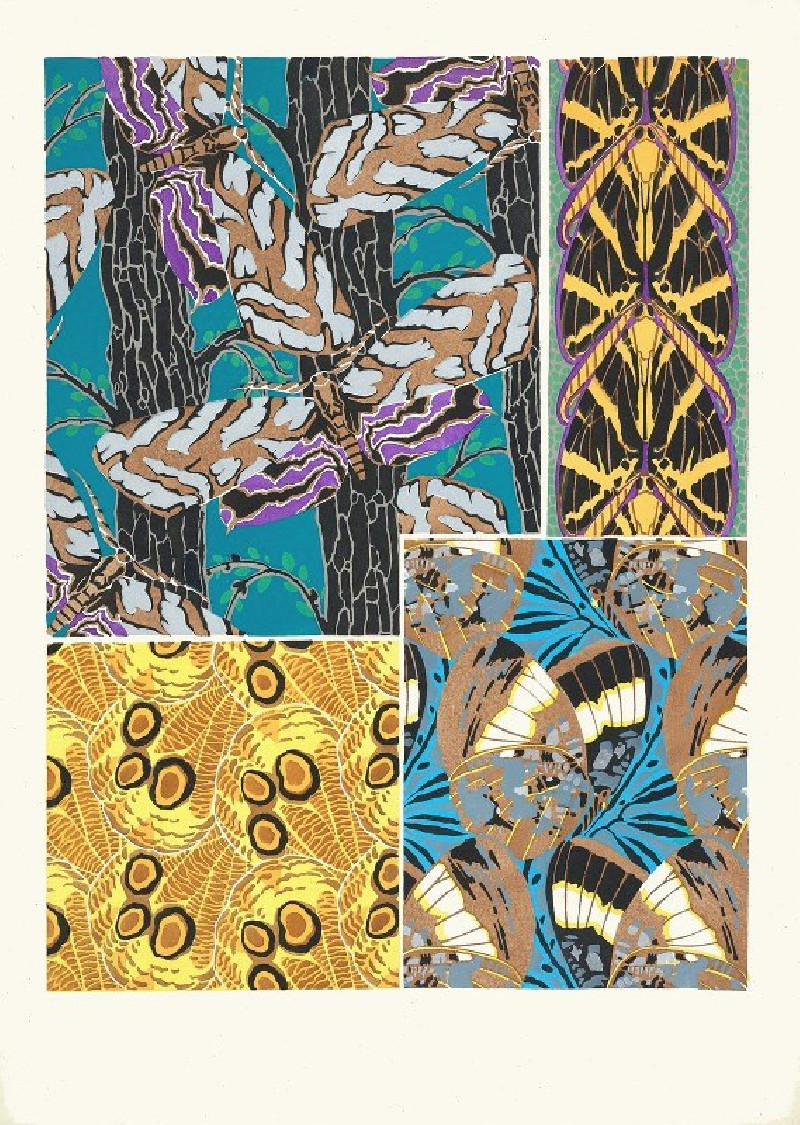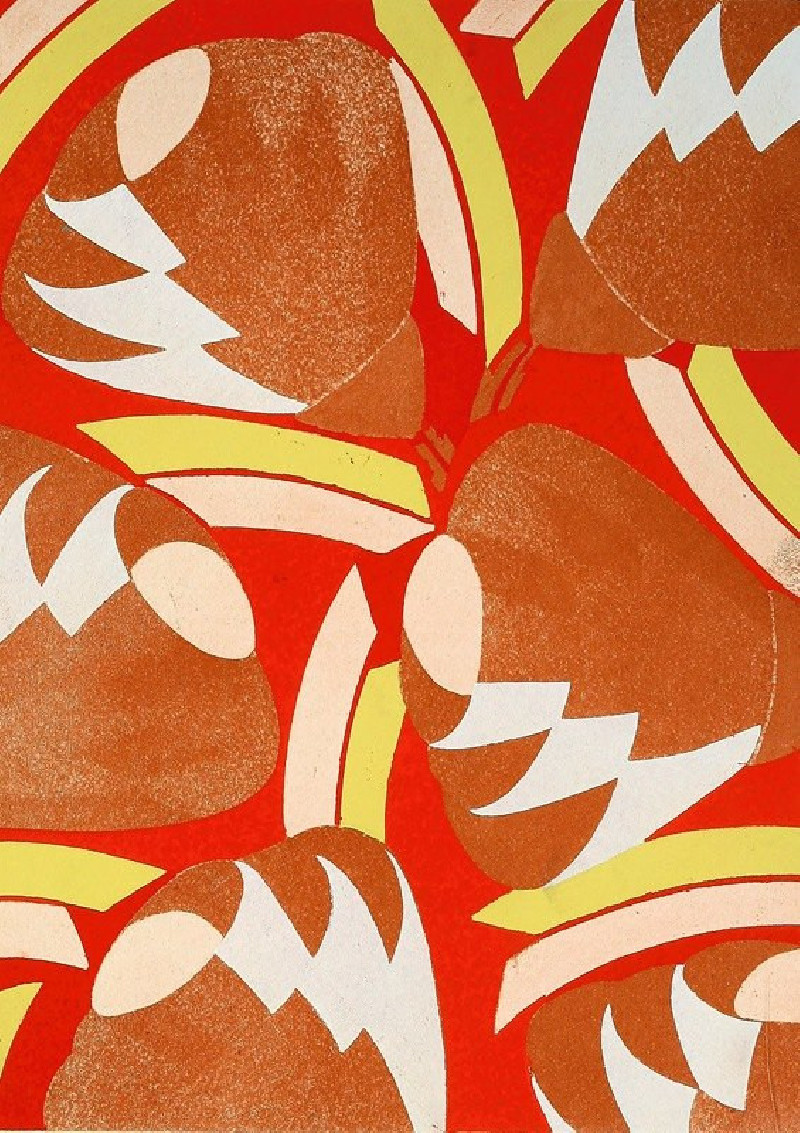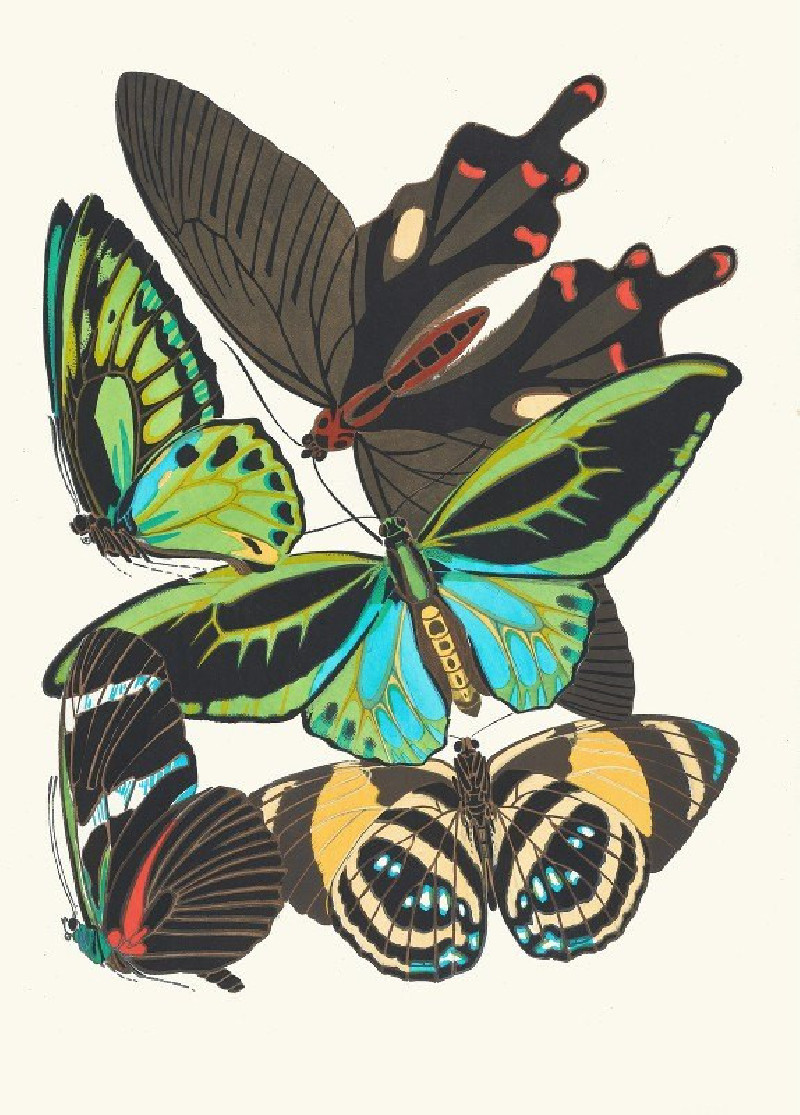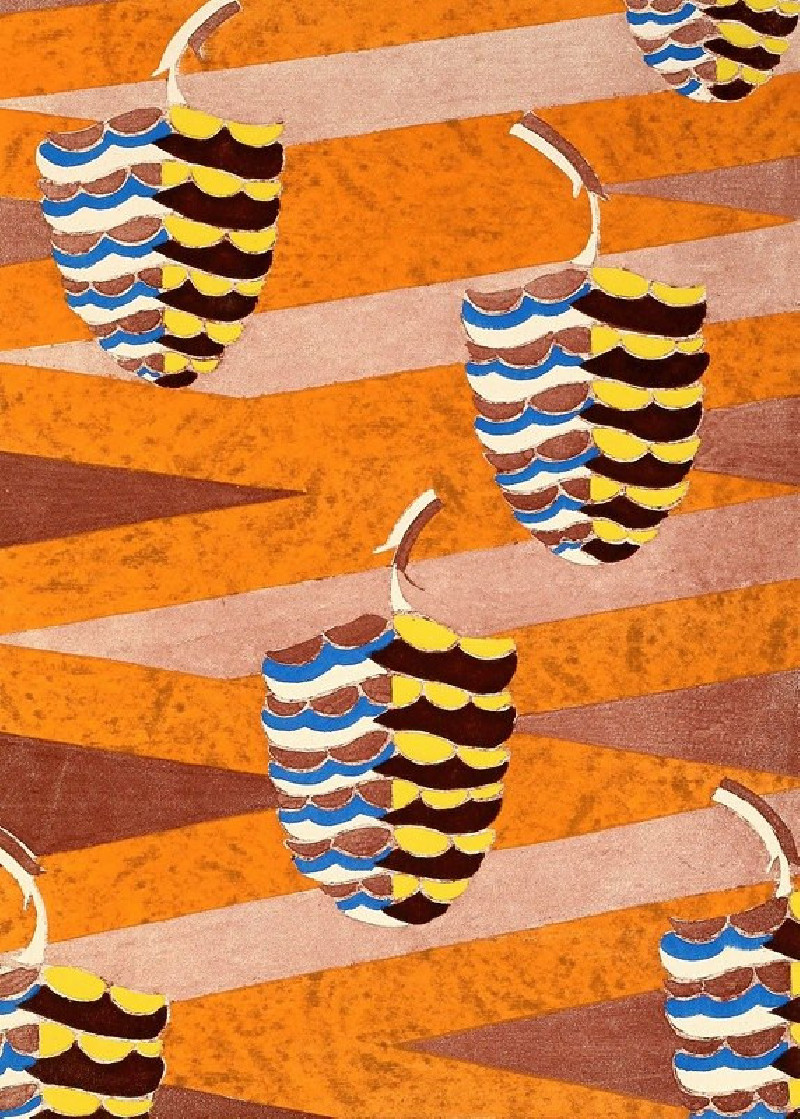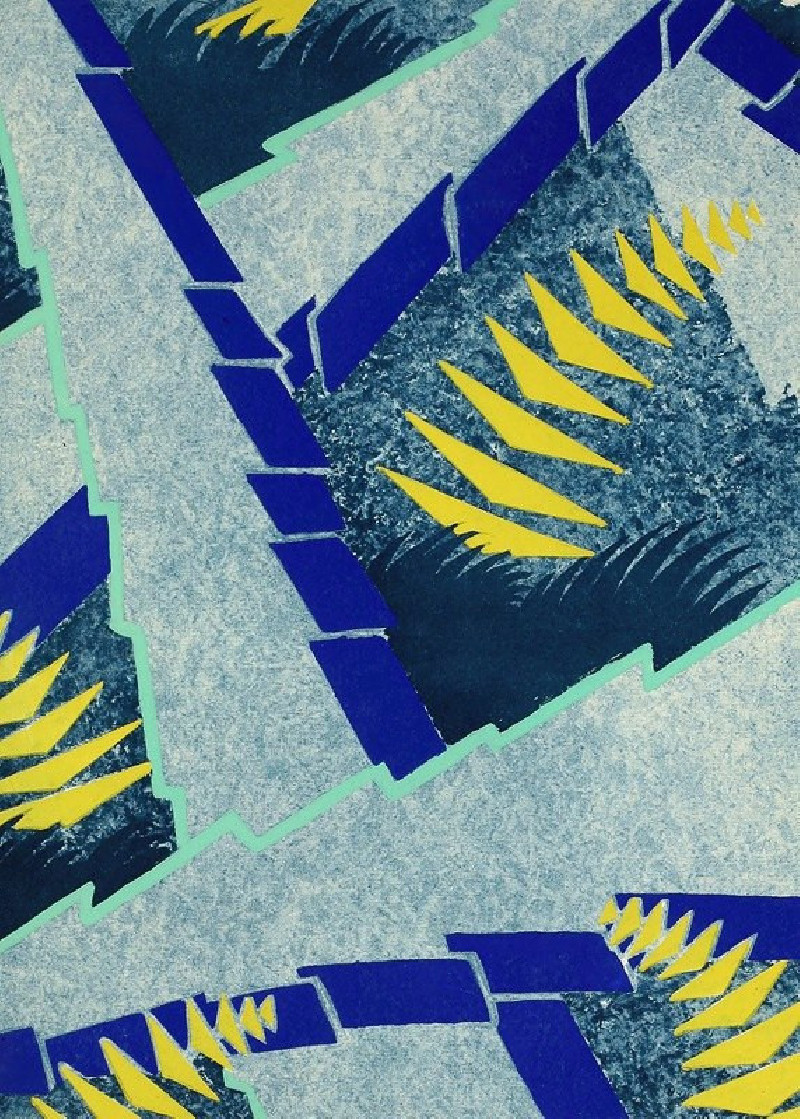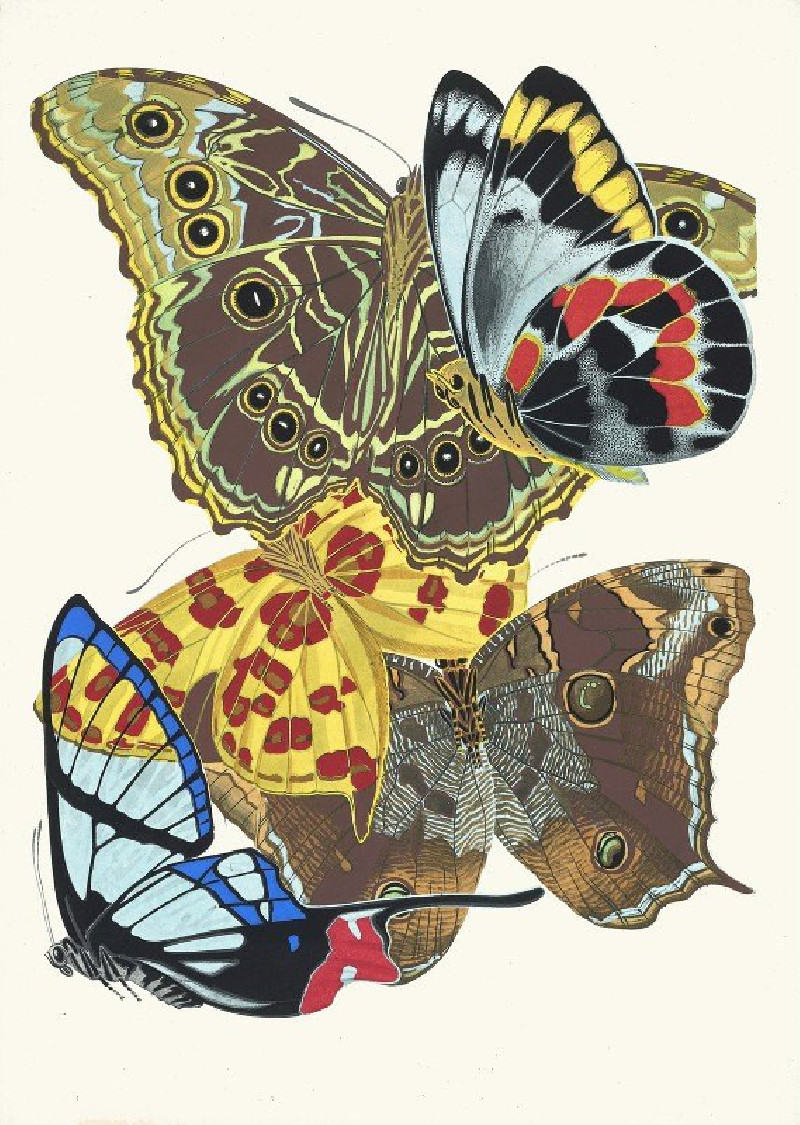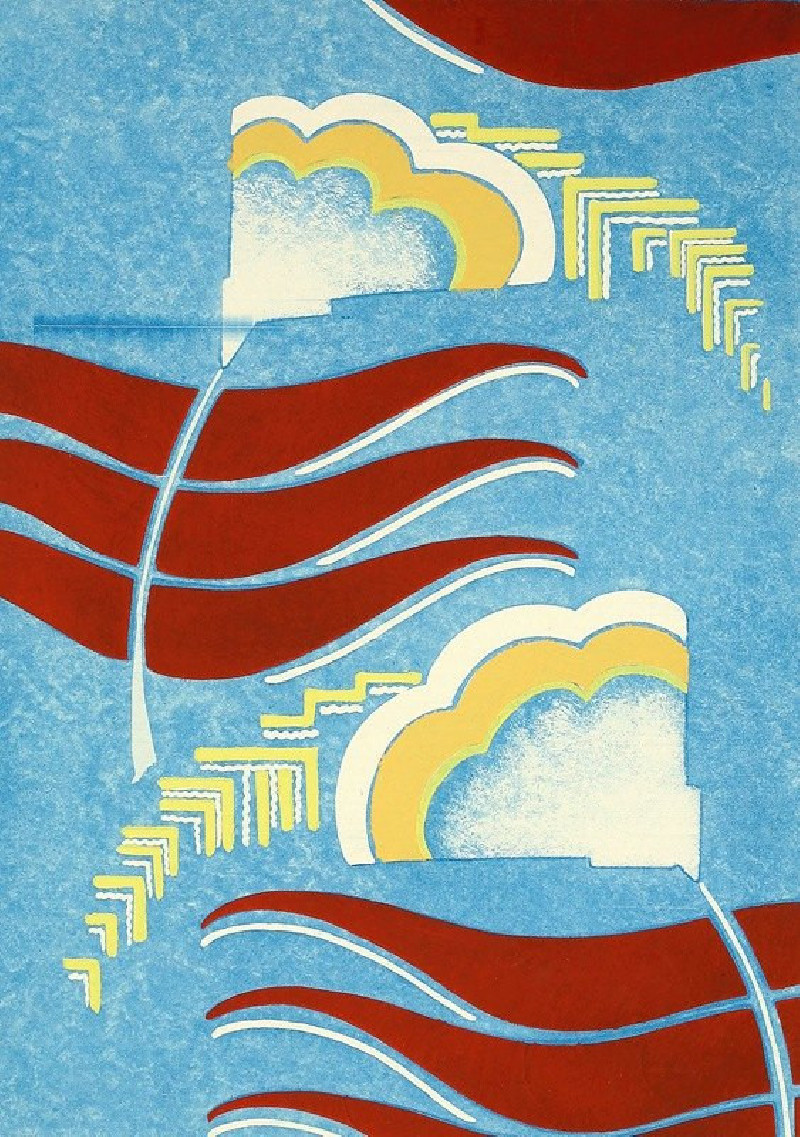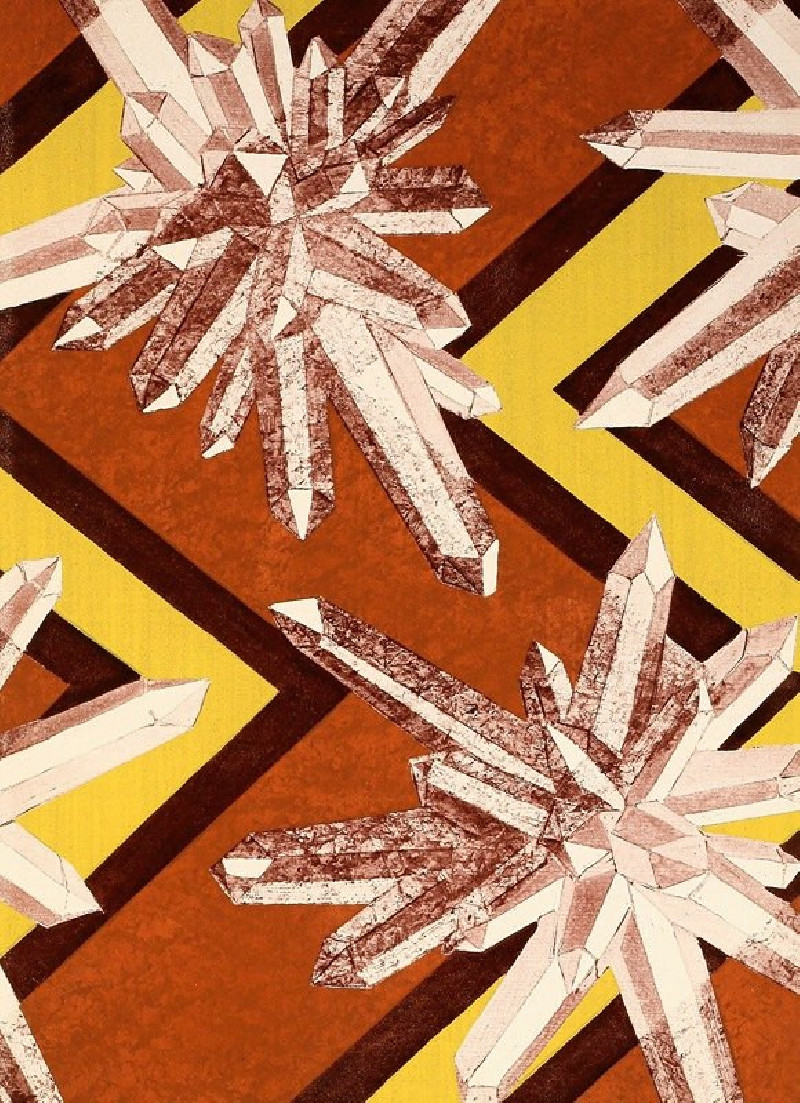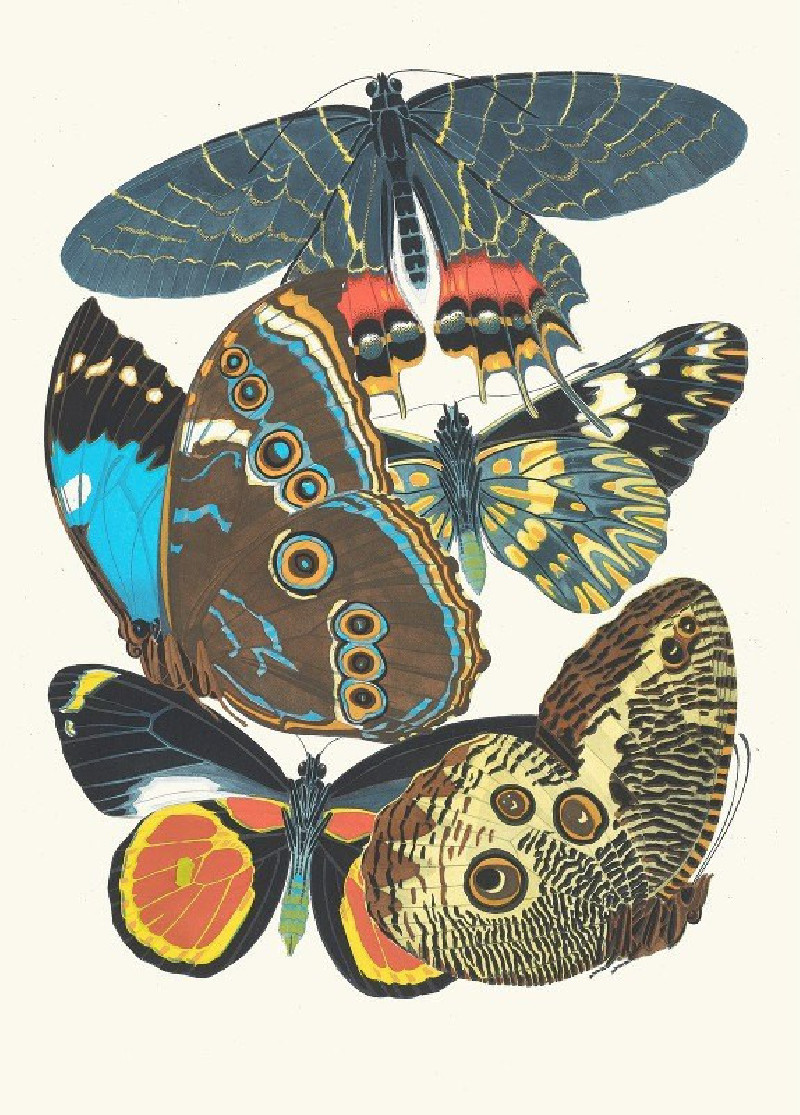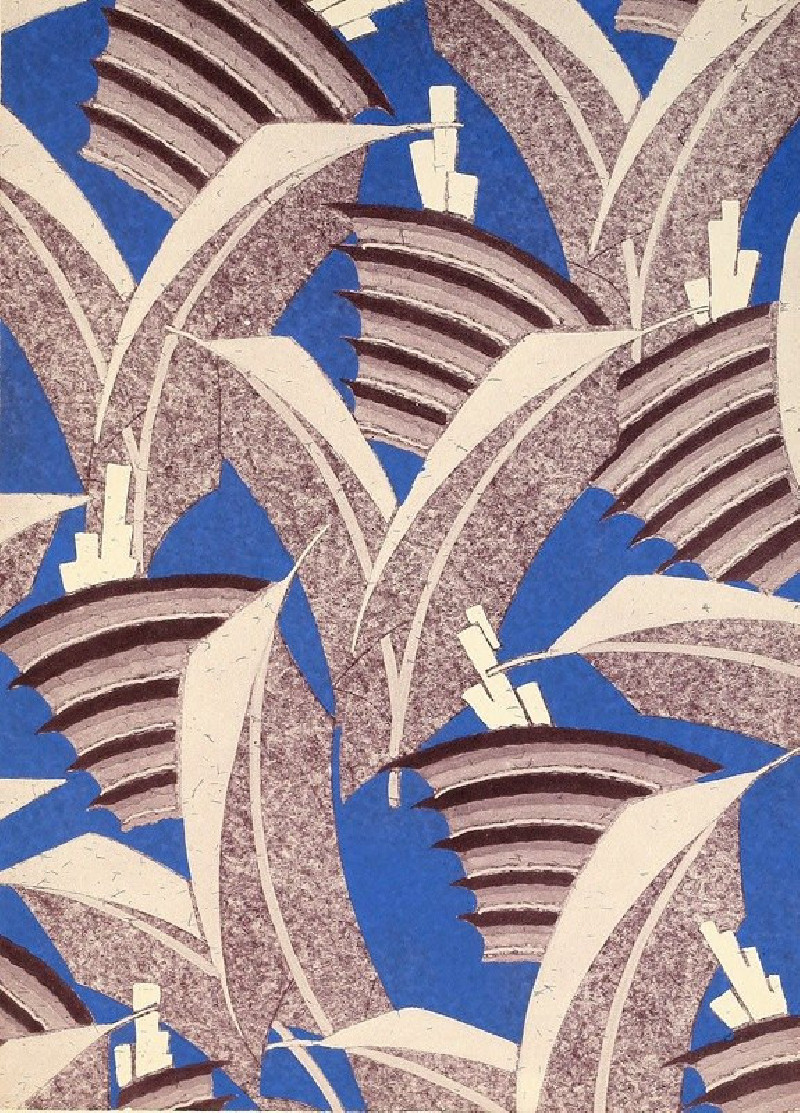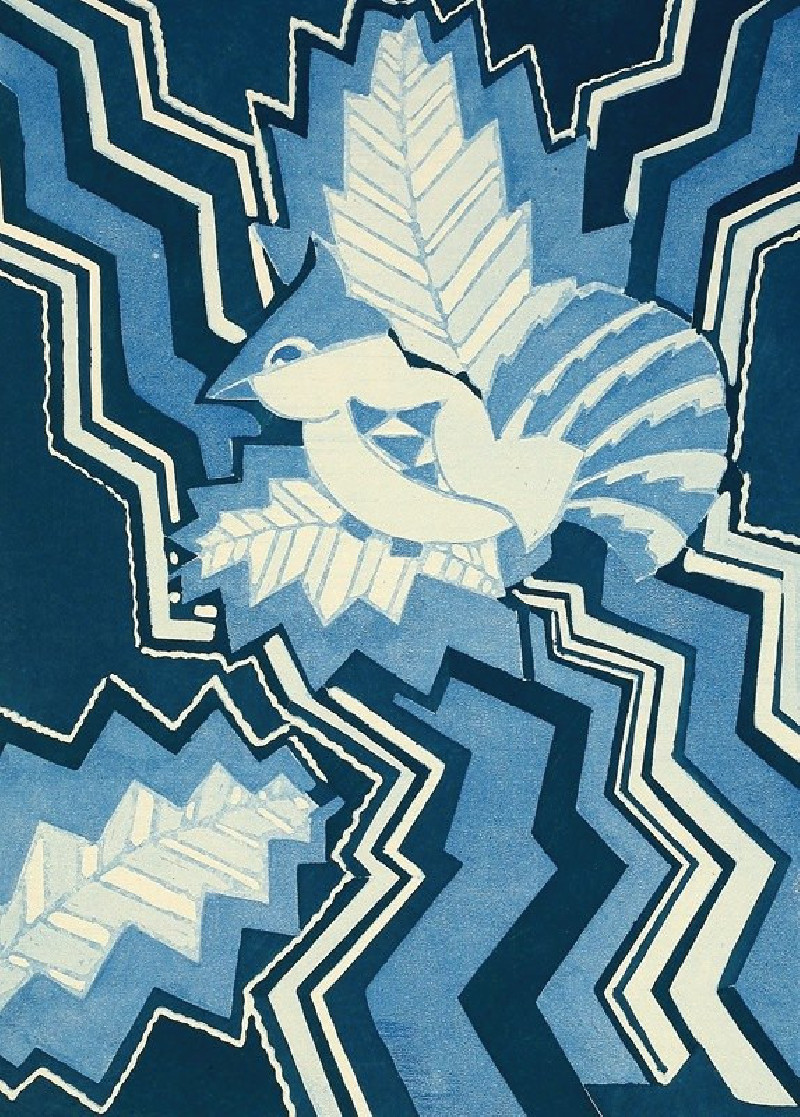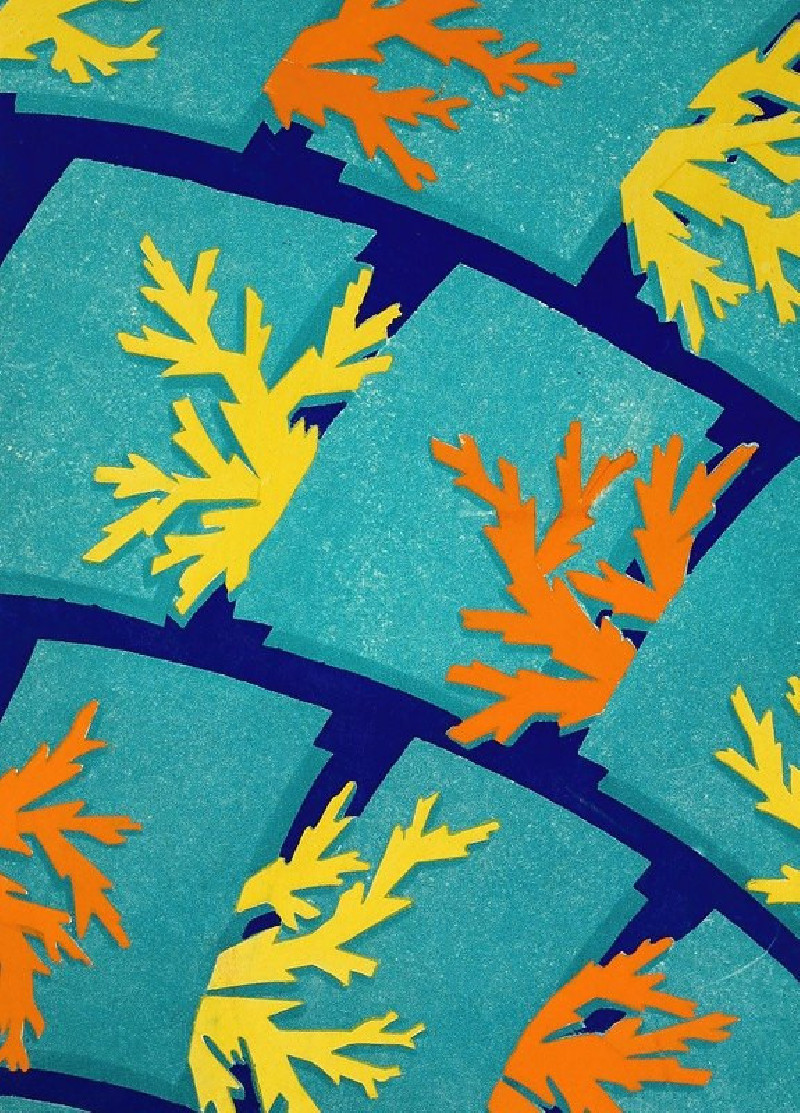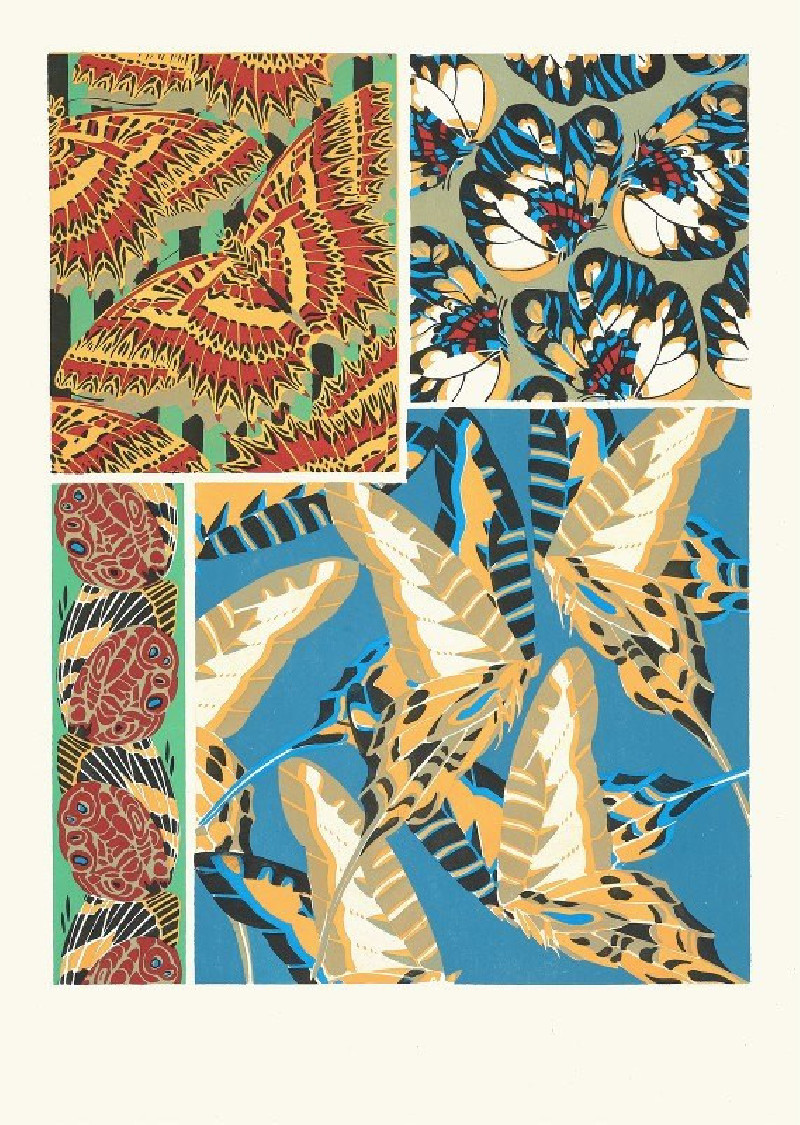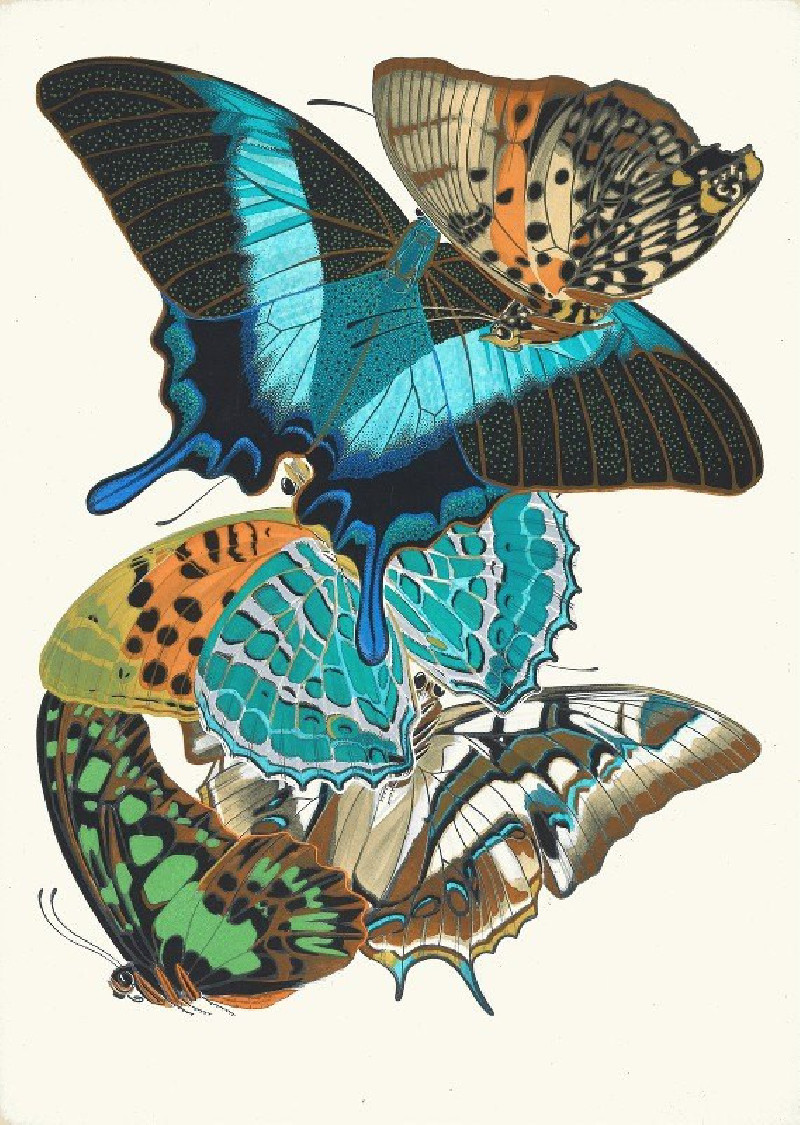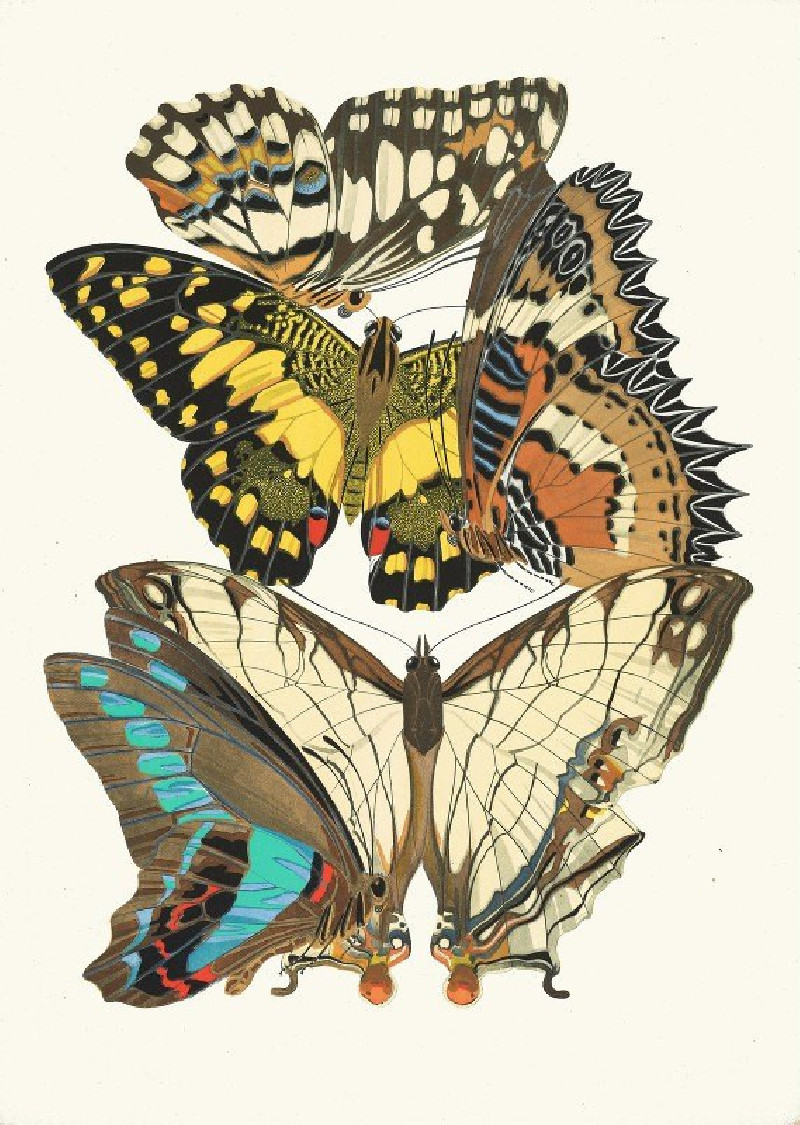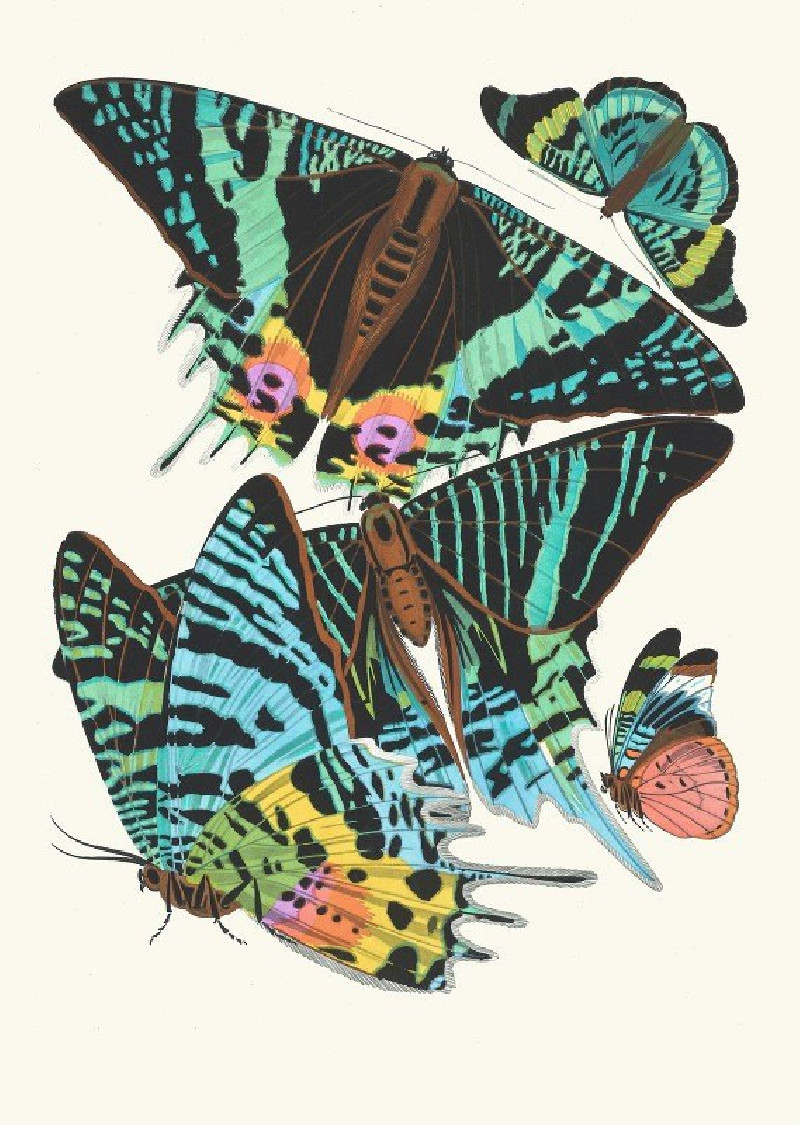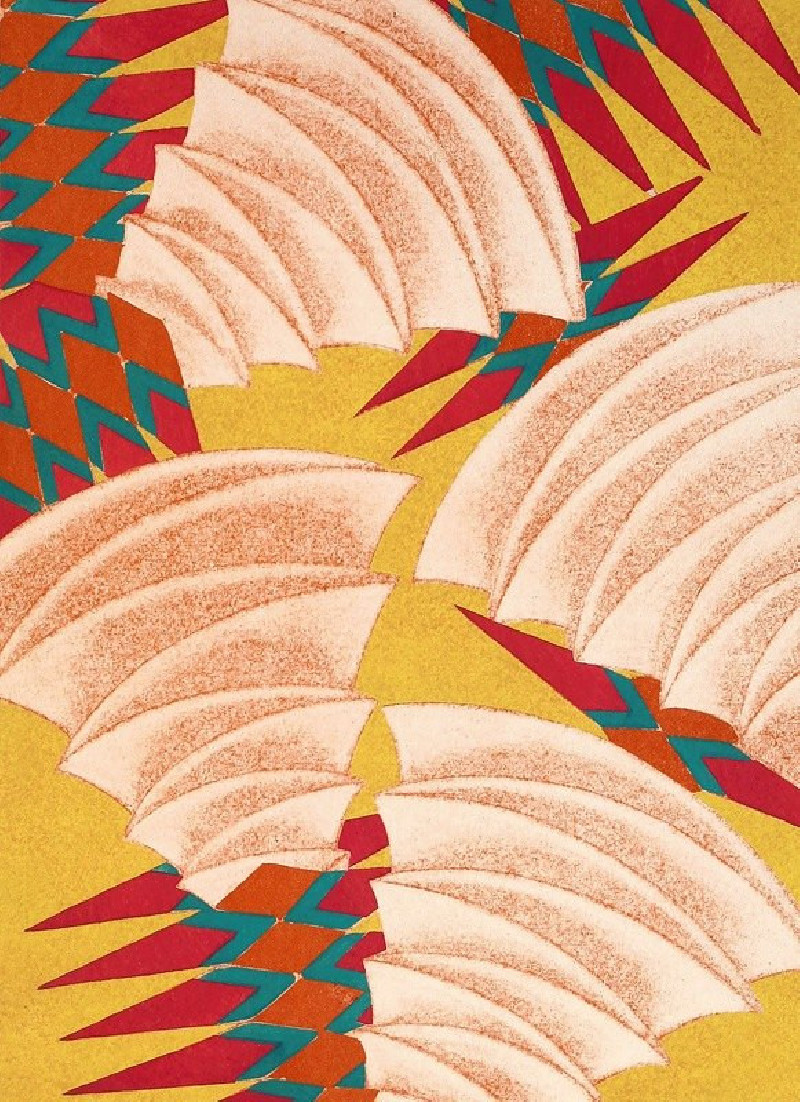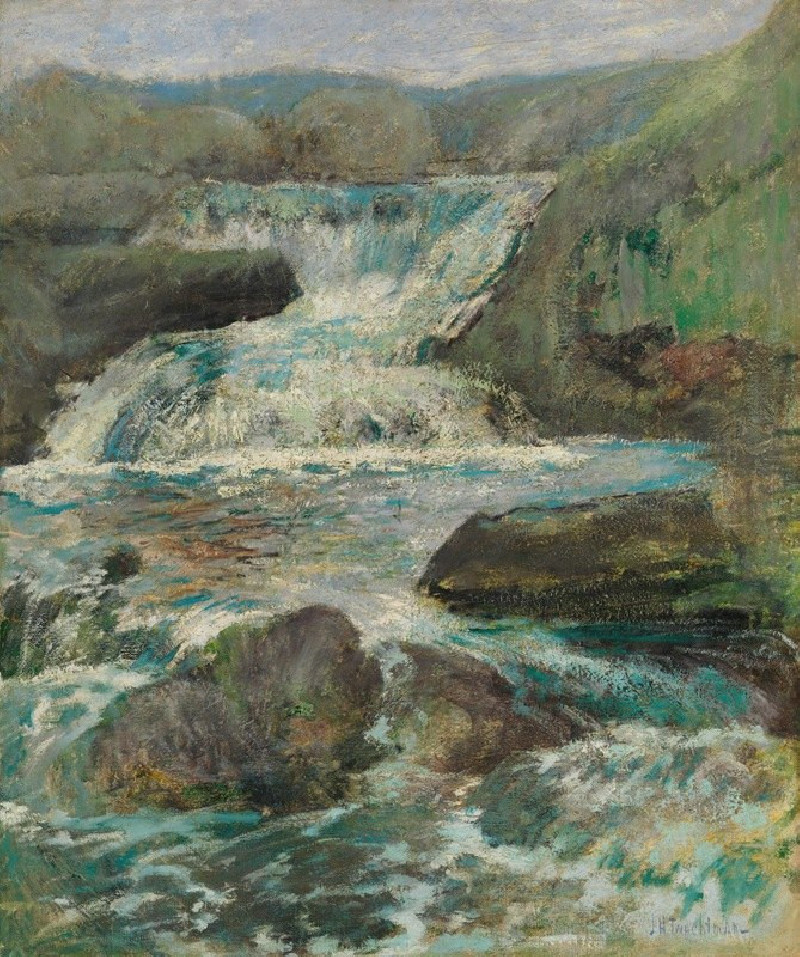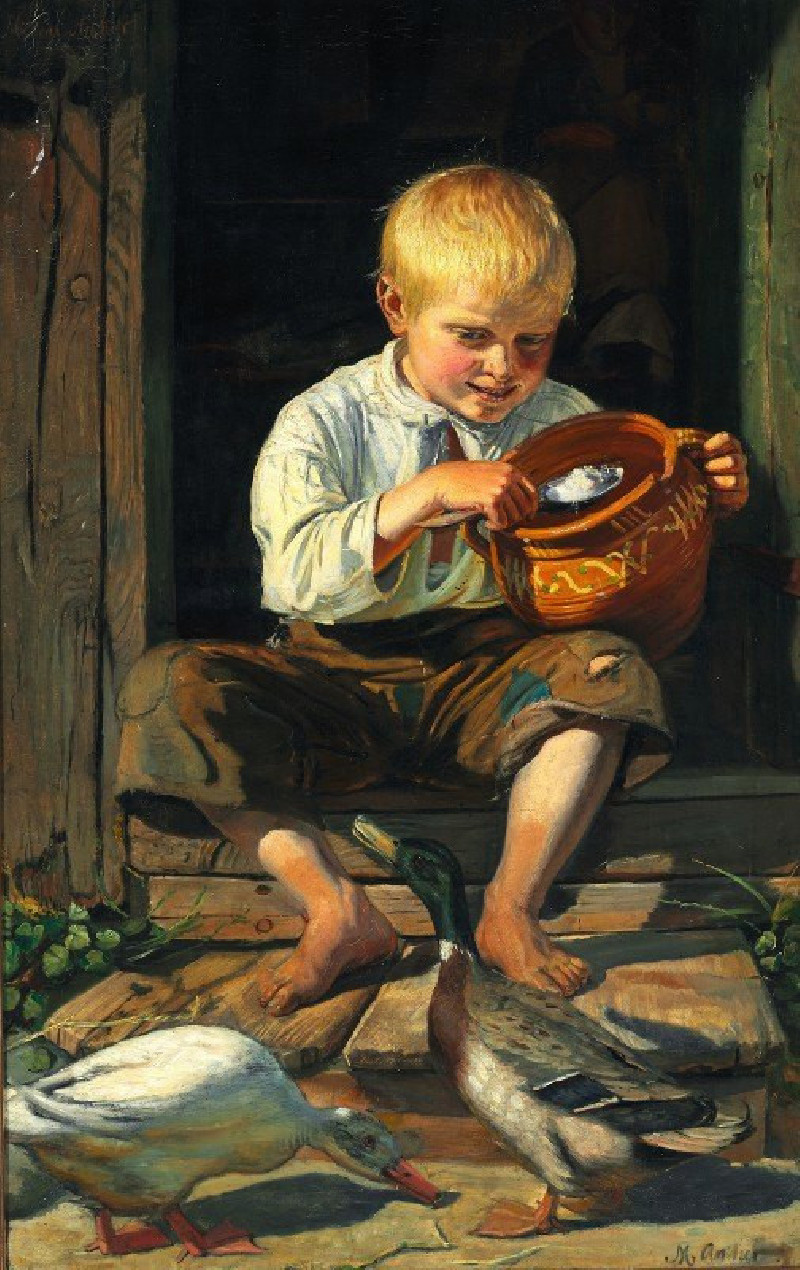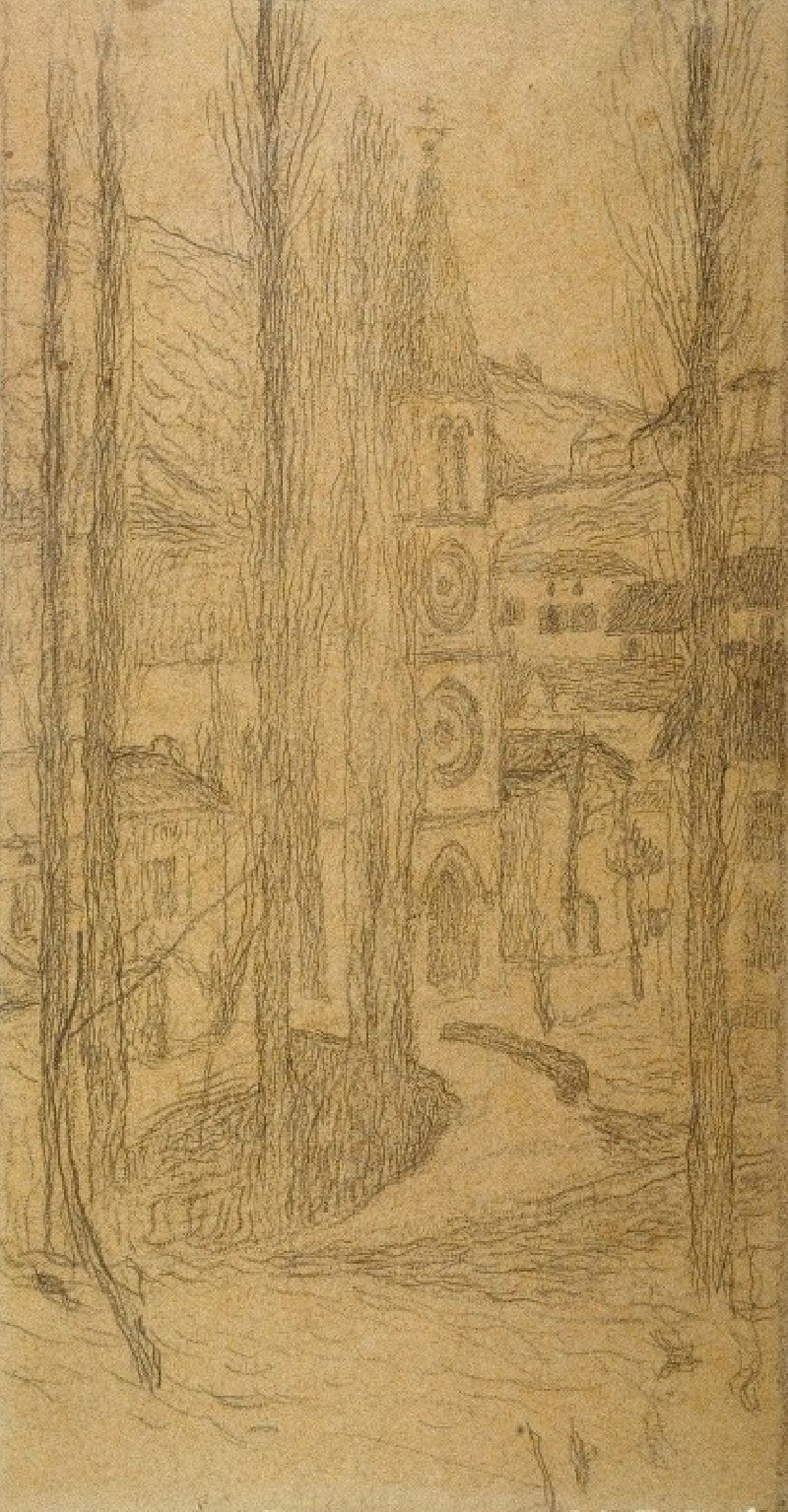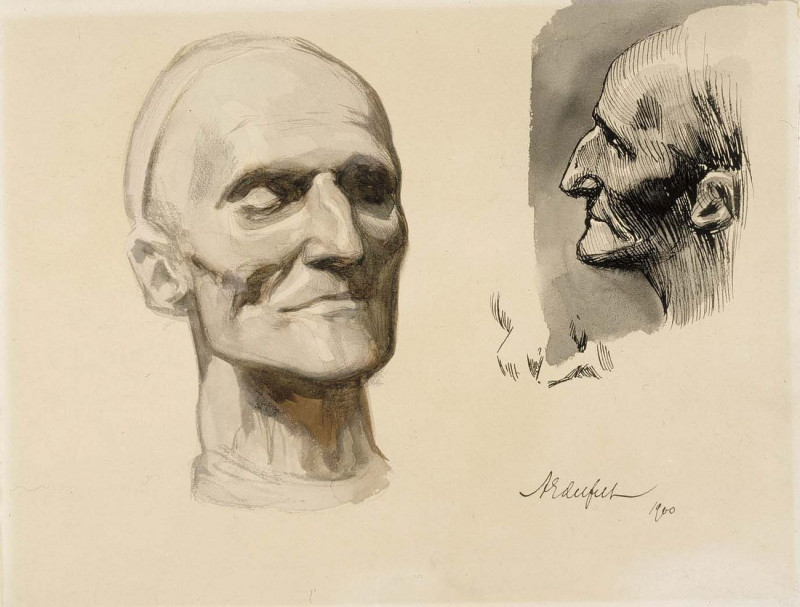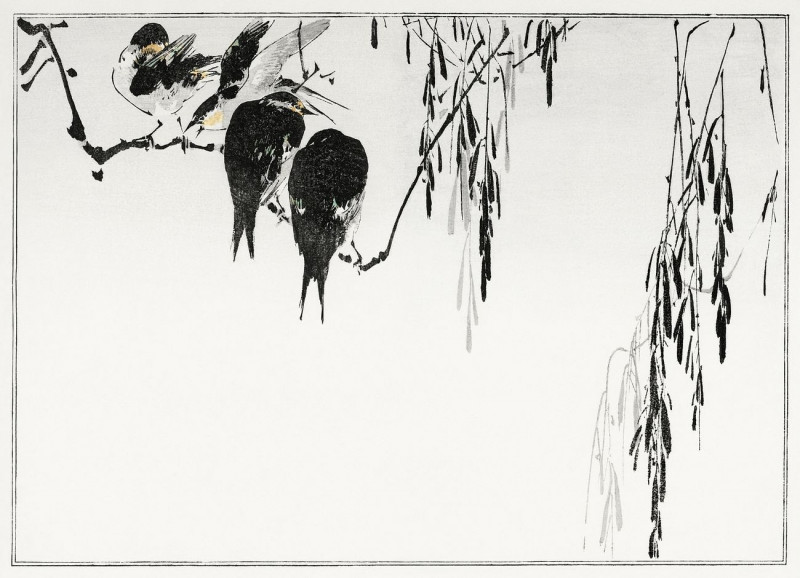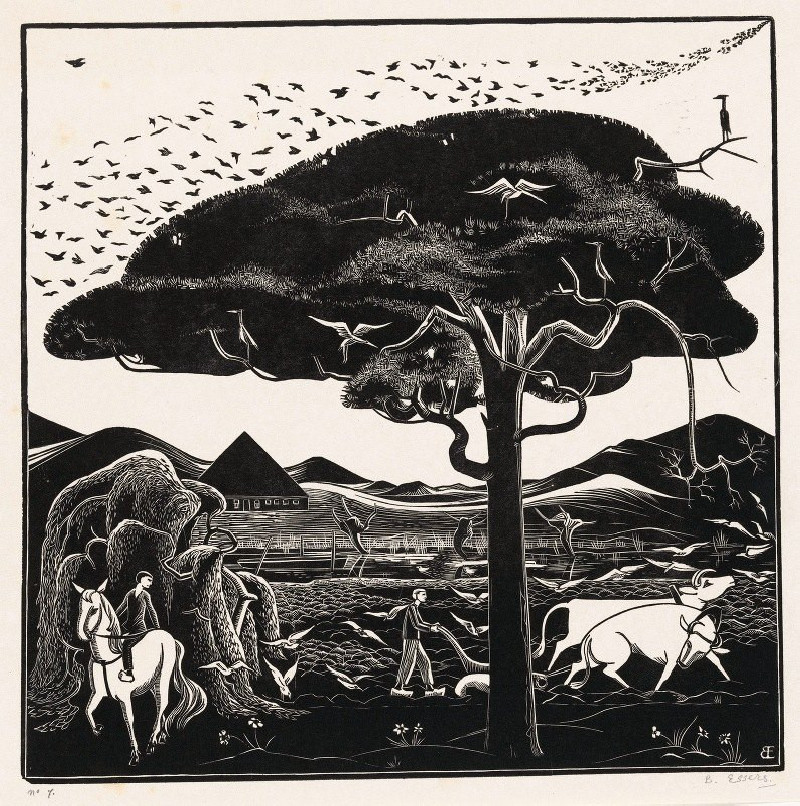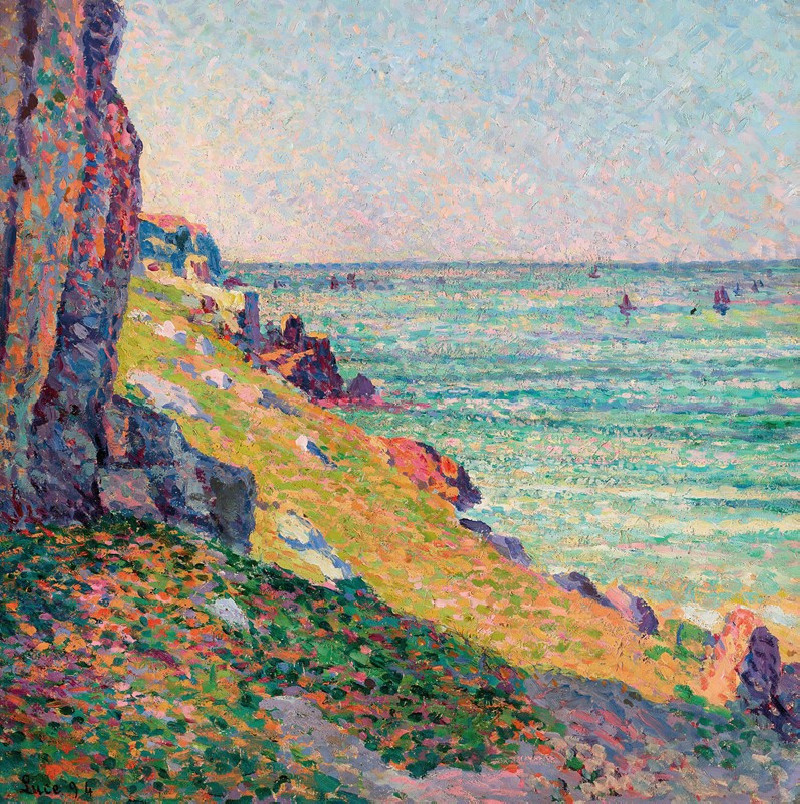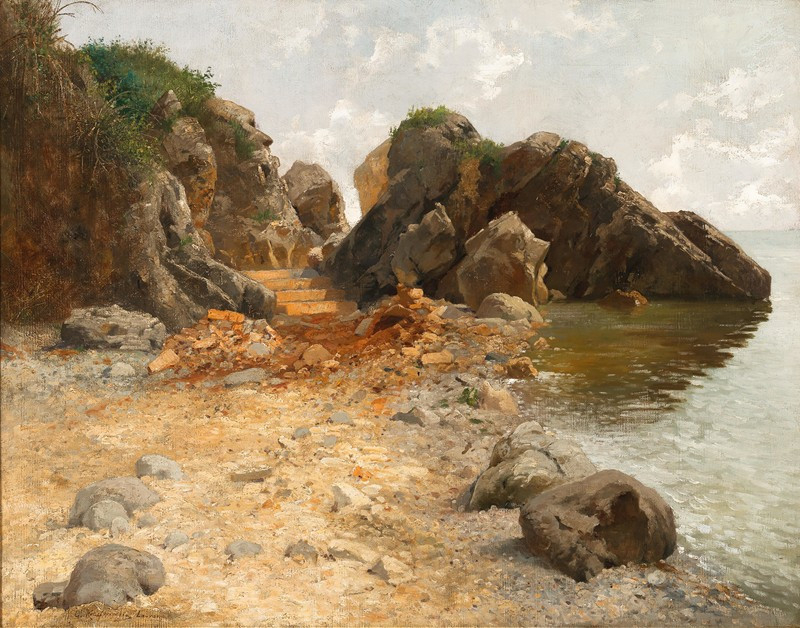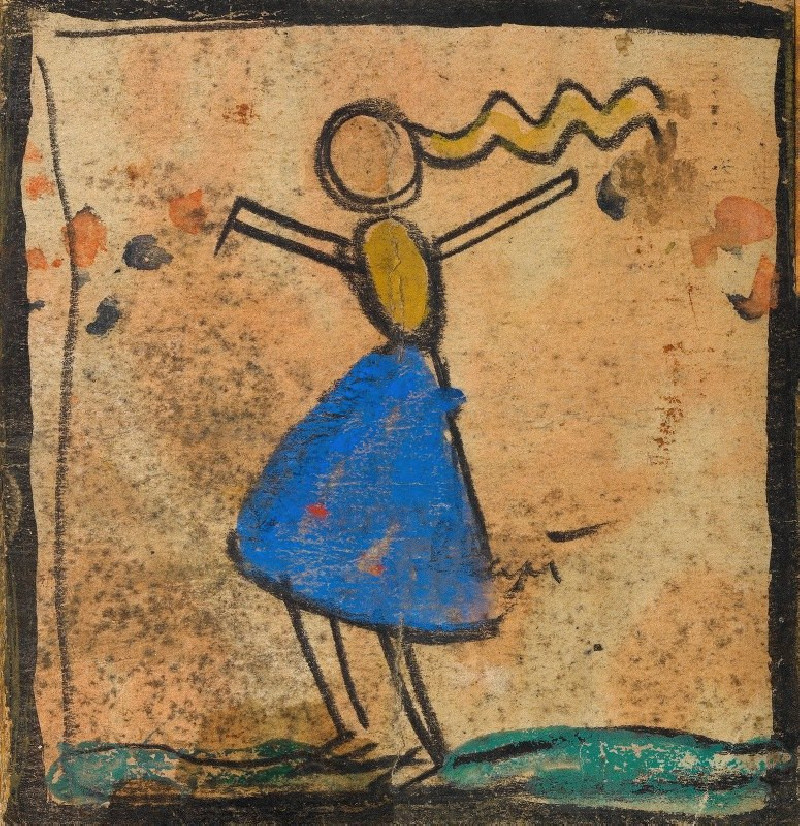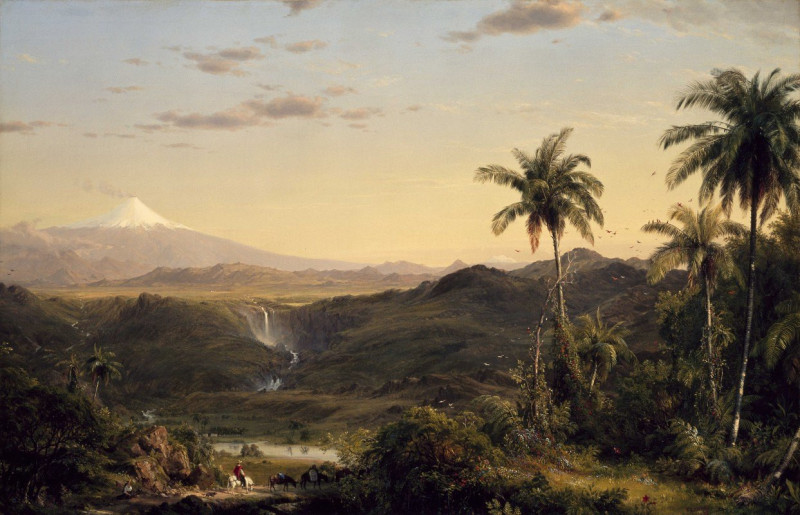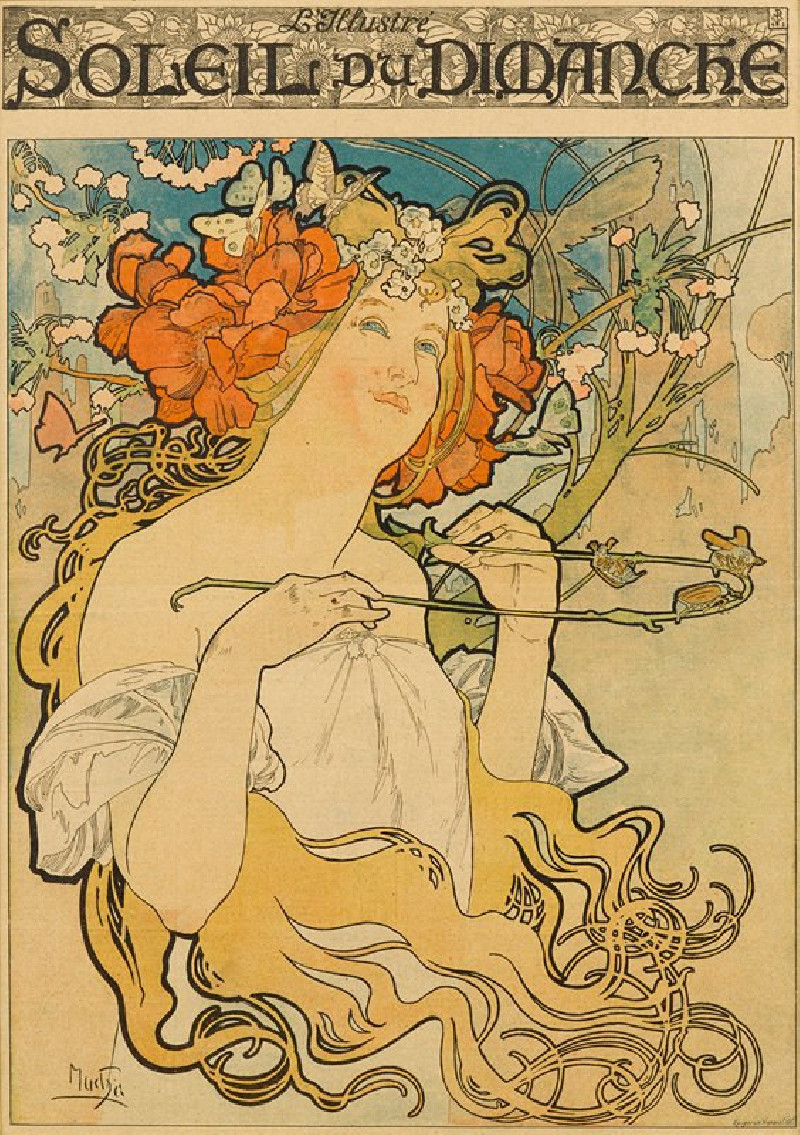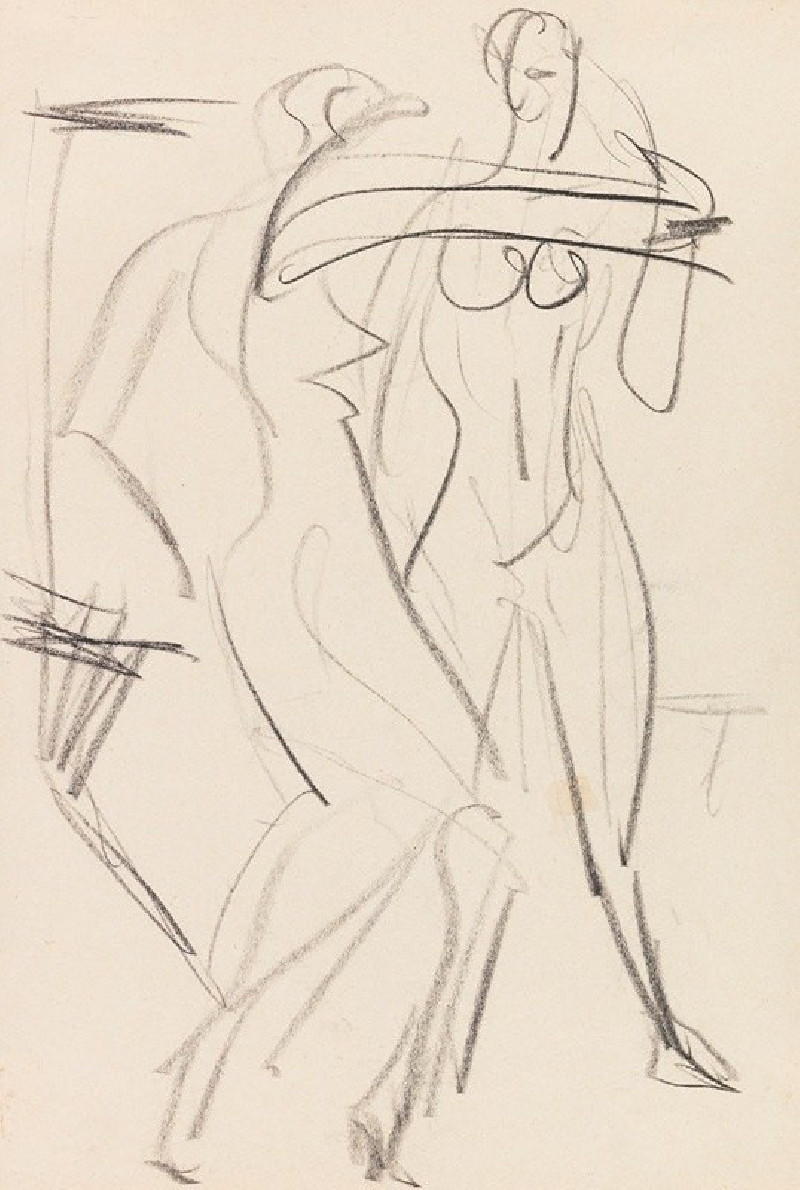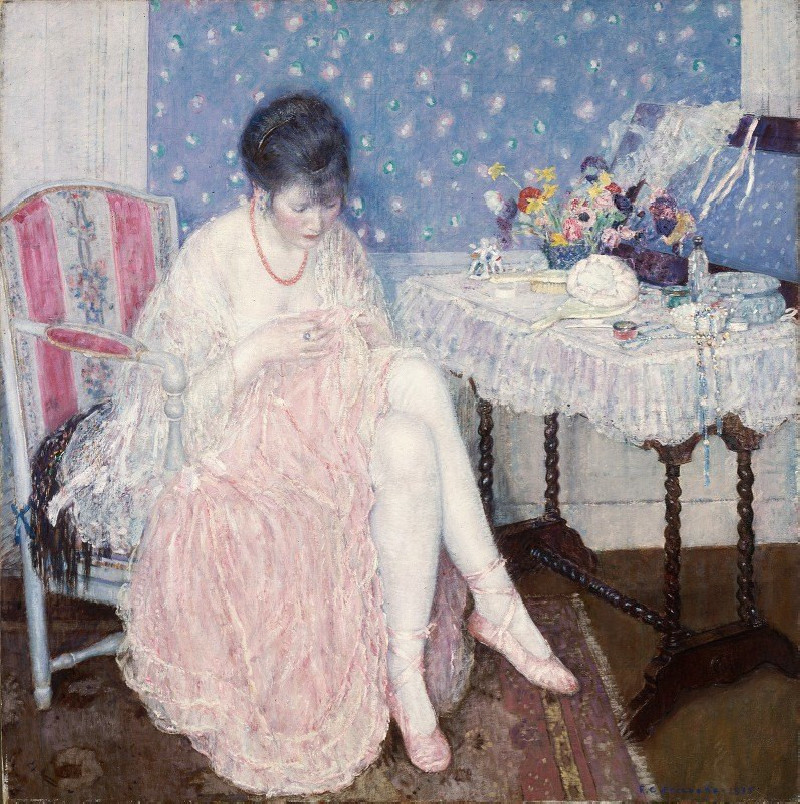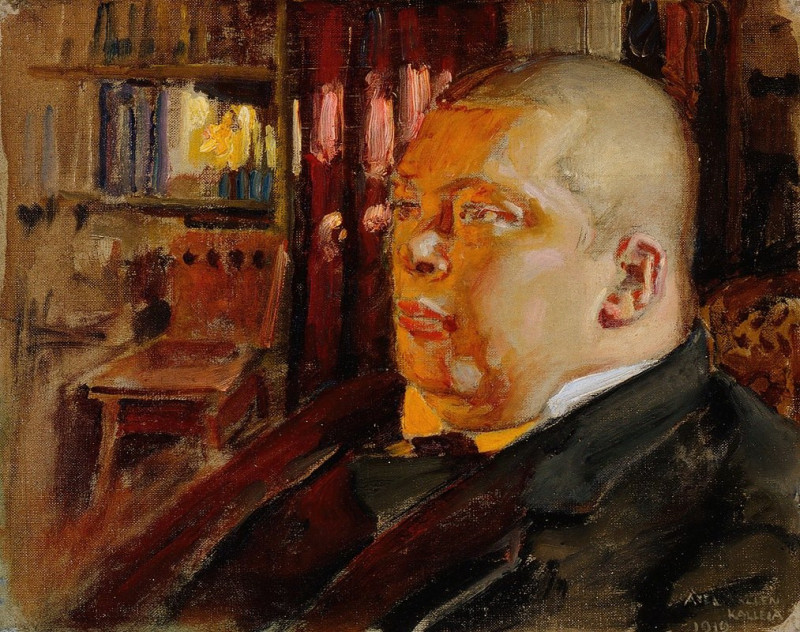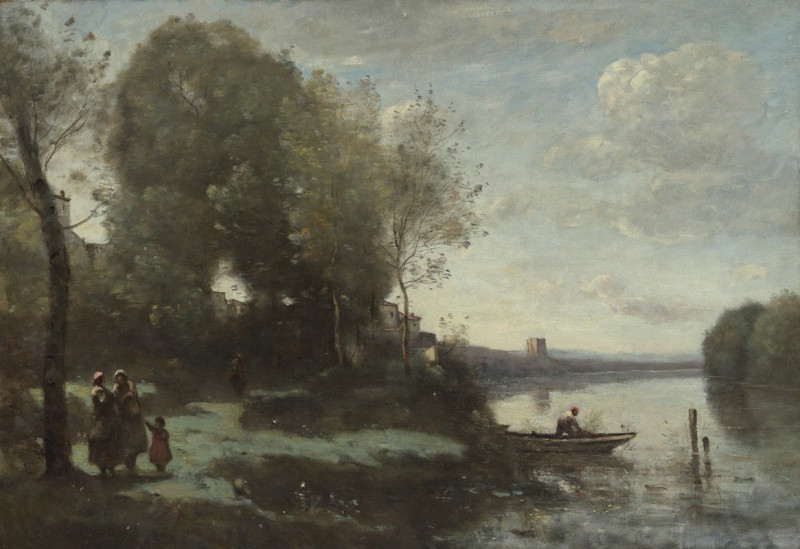Papillons, Pl. 16 (1925)
Technique: Giclée quality print
Recommended by our customers
More about this artwork
Emile-Allain Séguy's Papillons, Pl. 16 (1925) is a mesmerizing depiction of natural beauty, bringing to the forefront the exquisite intricacies of butterfly wings. This artwork showcases Séguy's signature vibrant coloration and precise attention to detail, allowing us to appreciate the unique patterns and textures that adorn each butterfly. The painting captures a dynamic collection of four butterflies, each distinguished by its own spectacular color palette and wing design.From the iridescent blue that blooms across one butterfly’s wings to the rich browns and subtle creams of another, Séguy masterfully employs his art to mirror the diversity found in nature. Pink and black speckles, along with striking stripes and delicate veining, add layers of depth and interest, making the piece not only a visual feast but a study in natural design.Papillons, Pl. 16 is more than just an aesthetic masterpiece; it serves as a tribute to the fragile beauty of butterflies, evoking a sense of wonder and respect for these small but significant inhabitants of our world.
Delivery
Returns
Emile-Allain Séguy was a popular French designer throughout the Art Deco and Art Nouveau movements of the 1920s. Often confused with the French entomologist Eugene Séguy who was active during the same time period, E.A. Séguy designed primarily patterns and textiles and was heavily influenced by the natural world. He was particularly fond of the intricate patterns and beauty of insects (Eugene would have approved), which he saw as “mechanic wonders” that provided abundant inspiration for interior design (Schiff, 157).

